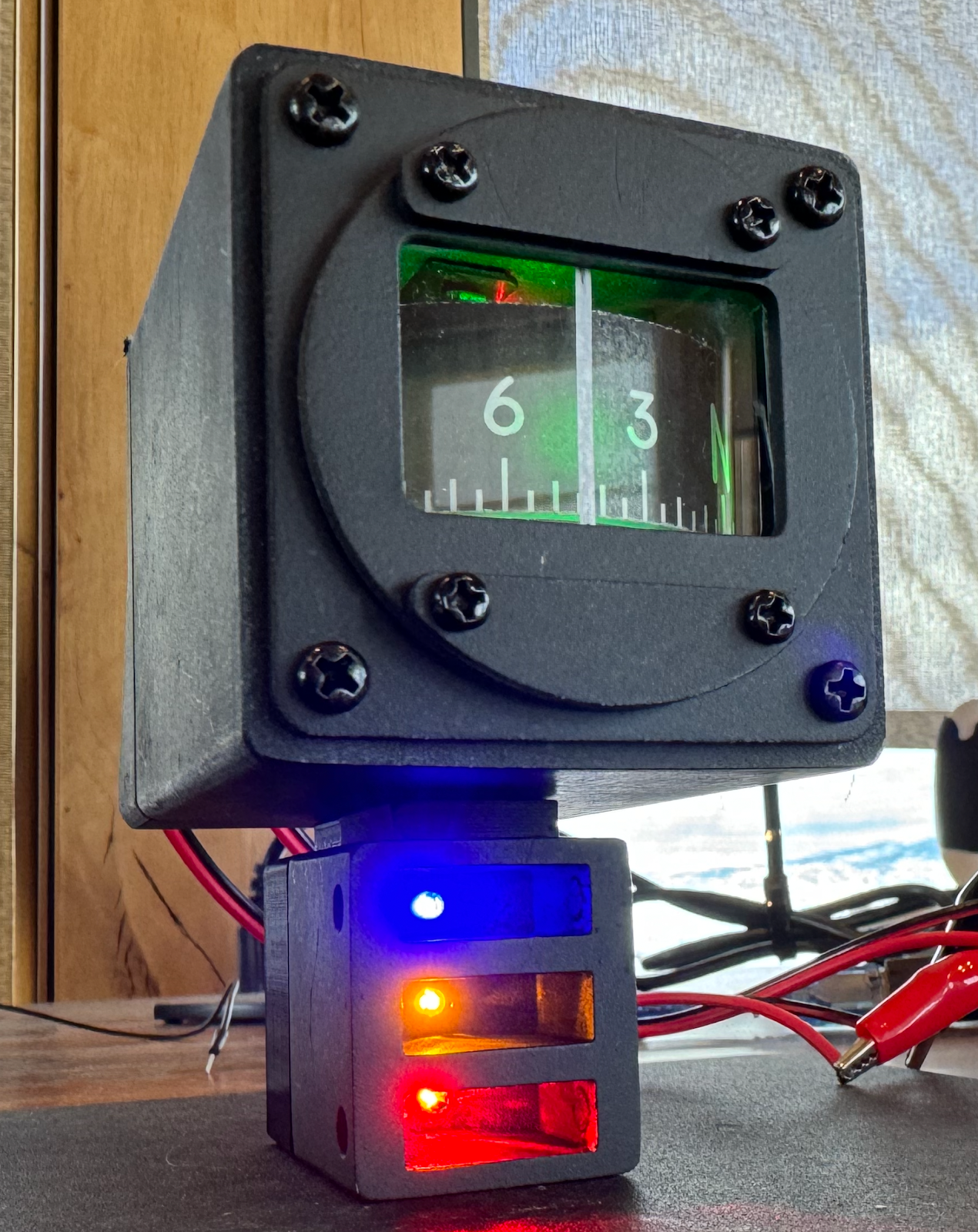IFR flight #2
 Today Charles and I went over some of the preflight stuff once more, as a refresher, and reviewed the basics of instrument flight (straight and level, standard rate turns, ... ). This was after I wrestled with the hood for a bit, quickly deciding that I like the foggles better. I had hoped the hood would block more of the outside world than the foggles, but it didn't and was harder to manage.
Today Charles and I went over some of the preflight stuff once more, as a refresher, and reviewed the basics of instrument flight (straight and level, standard rate turns, ... ). This was after I wrestled with the hood for a bit, quickly deciding that I like the foggles better. I had hoped the hood would block more of the outside world than the foggles, but it didn't and was harder to manage.The new things we looked at were: constant rate climbs and descents, constant rate and airspeed climbs and descents, doing each of those while turning, and timed turns.
The two most challenging aspects of today's flight were the constant airspeed and rate climbs and descents, and trying to time turns while doing those.
I felt almost overwhelmed, especially in the latter task. But that is the point: to push my ability to manage multiple variables at once, since parts of IFR flights have many simultaneous tasks, such as climbing turns while listening to ATC and having passengers ask questions. :) It drove home how it could be that people forget to "always fly the airplane first".
Check out the extended entry (the link below) to see some of notes I made on the procedures I have studied so far.
After today's 1.0 hours under the hood, I was exhausted. :)
Here's the rough, general idea of how to perform these maneuvers.
This is currently unfinished.
This is for the C-172R I fly in; and the power settings would need tweaking
based on density altitude. All airspeeds are 90 knots. Always re-trim the
airplane after a state change (power, attitude) when you plan to stay in a given
state for more than a few seconds. Your mileage may vary.
Constant airspeed climb:
- pitch up to an attitude that should give you 90 knots at full power, wait
for the airspeed to get to 90 - apply full power at 90 knots
- be ready with
the right rudder - control airspeed with pitch
- To level out:
- pitch down to slightly above level attitude
- keep power in
- when you reach cruise airspeed (~110 knots) bring power back to cruise
- pitch to level
Constant airspeed descent:
- bring power back to 1700RPM
- hold level until you reach 90 knots
- pitch down to maintain 90 knots
- control airspeed with pitch
- To level out:
- pitch up to slightly above level attitude
- bring the power into a cruise level, 2100RPM
- use right rudder to counteract the p-forces
- let the airspeed come up
- use pitch for altitude holding
- pitch up to slightly above level attitude
- pitch up to an attitude that should give you 500 ft/min at full power
- apply full power
- be ready with the right rudder
- control climb rate with pitch
- To level out:
- pitch down to slightly above level attitude
- keep power in
- when you reach cruise airspeed (~110 knots) bring power back to cruise
- pitch to level

